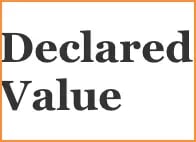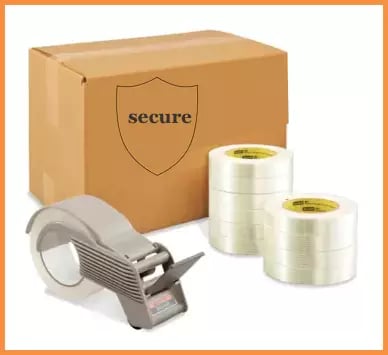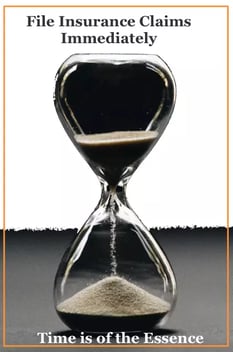
Insurance for Your International Shipments: Things to Know
Getting insurance for international shipments brings peace of mind for both shippers and importers. But filing, proving, and getting paid for claims can be challenging—especially when relying solely on a carrier’s “declared value” or protection program.
Important things to consider when insuring your shipment
What Carriers Call “Declared Value” Isn’t Traditional Insurance
Many shippers simply tick the carrier’s “declared value” or protection option because it is integrated with labels, billing, and delivery. This simplicity is appealing, but the rules for approval are strict and often non-negotiable.
Why the different wording? Calling a program “insurance” can trigger regulatory oversight (e.g., capital reserve requirements for property & casualty insurers). Carriers therefore use terms like shipment protection or declared value to avoid being regulated as insurers.
Ensure Your Product Is Insurable
Before you ship, confirm the item is eligible for coverage under the carrier’s rules (or your third-party/cargo policy). Some categories (e.g., cash, certain electronics, perishable items, or high-risk collectibles) can be excluded or require special handling.
Lost in Transit vs. Still in Network
Lost-in-transit claims are typically the most straightforward—once the carrier officially declares the shipment lost. If you insure with an external provider, timing can create a mismatch between when the carrier declares loss and when your policy’s claim window starts. When in doubt, align the policy with the carrier’s scan events and loss declarations.
Special Cases: Artwork & Antiques
Artwork typically must be professionally packed and accompanied by proof of value (commercial invoice or independent appraisal). Many policies include a deductible (often 3–5% of the insured value; minimums are common). For antiques, insurers may pay the lesser of repair/restoration plus any verified depreciation—never exceeding the declared insured value. If the underwriter pays full declared value, they may retain the item as salvage.
International Shipping Insurance Costs & Coverage: Comparison Table
Indicative example only — actual rates, deductibles, and exclusions vary by carrier and policy. Always confirm details with your provider.
| Feature | Carrier Declared Value / Protection | Cargo / Third-Party Insurance |
|---|---|---|
| Typical cost (illustrative) | Often a % of declared amount or tiered fee at checkout | Commonly ~0.5%–2.0% of insured value (varies by commodity, route, loss history) |
| Deductible | May apply; terms vary by carrier | Often 3%–5% with minimums (e.g., ~$500) on higher-value items |
| Coverage scope | Limited; strict packaging & documentation rules | Broader terms available; can tailor to commodity and route |
| Exclusions | Often excludes fragile/high-risk items without special packing | Customizable; specialty riders available for art/antiques/electronics |
| Claims speed | Follows carrier determination (e.g., “lost” vs. “in transit”) | Handled by insurer; may proceed in parallel with carrier trace |
| Documentation | Shipping label, photos, proof of value; strict timelines | Policy-specific; usually invoice/appraisal + packing evidence |
| Best for | Low-value, low-risk items when convenience is paramount | Higher values, specialty goods, or stricter service-level needs |
Related Resources
- Commercial invoice for international shipping
- Declared value, CIF & valuation for international shipping
- When to include a certificate of origin
- What is an HS code? Tariff classification basics
- Canada importer registration for CARM
- Canada export declaration (CERS): B13A
- What is a bill of lading or waybill?
- Choosing a Canadian customs broker
- Shipping via ocean freight to and from Canada
- Common CANADIAN IMPORT FEES
Packaging & Labeling: The #1 Claim Determinant

Packaging Basics to Protect Your Claim
- Use a rigid outer box and sufficient internal cushioning to prevent movement.
- Nest inner packaging (padded envelope, small box) within a larger outer box, if appropriate.
- Seal all seams and flaps with strong packing tape; reinforce stress points.
- Design to withstand standard courier handling, including potential drops from ~5 ft.
- If the outer box looks intact but contents are damaged, that’s a red flag for insufficient internal protection.
ISTA 3A for Parcels up to 70 kg: Carriers often reference the ISTA 3A simulation test (for individual packages shipped by air/ground couriers) as a benchmark for “standard rigours of parcel handling.” If shipping something originally palletized, add protection when sending the item individually by courier.

Labels & Discretion
Do not reveal value or contents on the exterior. Avoid descriptive words that imply high value. For international customs forms, place the documents under the shipping label (in the carrier’s pouch). When using paperless trade, the customs invoice is typically transmitted electronically.
Photograph Before You Ship
Photograph the item, internal packing, and sealed box. Capture the shipping label clearly. These images can be decisive for claim approval.

Claims: Timelines, How to File, and What to Keep
Receiver Instructions at Delivery
At delivery, recipients should inspect immediately. If damage is visible, they should refuse the parcel or write clear, specific notations on the delivery slip. Notify the carrier and insurer right away and include photographs. Include the recipient’s email when purchasing insurance to streamline communication.
Preserve Evidence
Keep the damaged goods, all packaging, and photos until the claim is fully resolved. Discarding packaging prematurely can jeopardize your claim.
Using third parties, virtual addresses, or parcel shops can complicate or invalidate claims. Ensure your route and collection/delivery points are eligible under the policy terms.
 Time limits for package insurance claims
Time limits for package insurance claims
Deadlines Matter
Insurers impose strict claim windows. Some require filing within days of delivery (often 7–14 days); others start the clock from the ship date. Check your specific policy to avoid missing deadlines.
When to Consider Insurance vs. Self-Insuring
For low values (e.g., ~$200), the administrative effort may outweigh the benefit—many shippers self-insure up to a comfortable threshold. For higher values, fragile goods, or where service recovery is critical, dedicated cargo/third-party coverage is often worth it.

Insured Value vs. Actual Value
Claims pay the actual value up to the insured amount. If an item worth $2,000 is insured for more than $2,000, the maximum payout remains $2,000.
Claim Checklist (Common Requirements)
- Carrier shipping label and tracking details
- Proof of value (retail/purchase invoice, certificate of sale, or appraisal)
- Photos of the item, internal packing, and sealed outer carton
- Copy of the claim filed with the carrier
- Certificate of loss (if provided by the carrier)
- For damage: delivery notations and dated photos upon receipt
- For theft: police report or incident number (as required)
Frequently Asked Questions
Is declared value the same as insurance?
No. Declared value/protection is a carrier program with different obligations and exclusions than traditional cargo insurance.
How much does shipping insurance cost?
It varies by commodity, route, and value. Insurance - or "declared value" coverage by offered by carries is often the most expensive. Cargo/third-party coverage can run roughly 1%–3.0% of the insured value. Confirm exact pricing with your provider.
What is the ISTA 3A packaging standard?
ISTA 3A is a lab test protocol simulating the handling of individual parcels in air/ground courier networks (drops, vibration, compression). Carriers may reference it when assessing packaging adequacy.
How long do I have to file a claim?
Some insurers require filing within 7–14 days of delivery; others set deadlines from the ship date. Always check your policy’s timing rules.
Are art and antiques insurable?
Often yes—if professionally packed and supported by proof of value/appraisal. Deductibles and special conditions (including salvage rights) commonly apply. See section above.
What evidence should I keep?
Keep evidence of the item itself including documenting the packaging. Retain the damaged item, all packaging, photos, shipping documents, and any delivery notations until the claim is closed.
Should I self-insure small orders?
We recommend against insuring against small orders.
JETWORLDWIDE.com/contact





